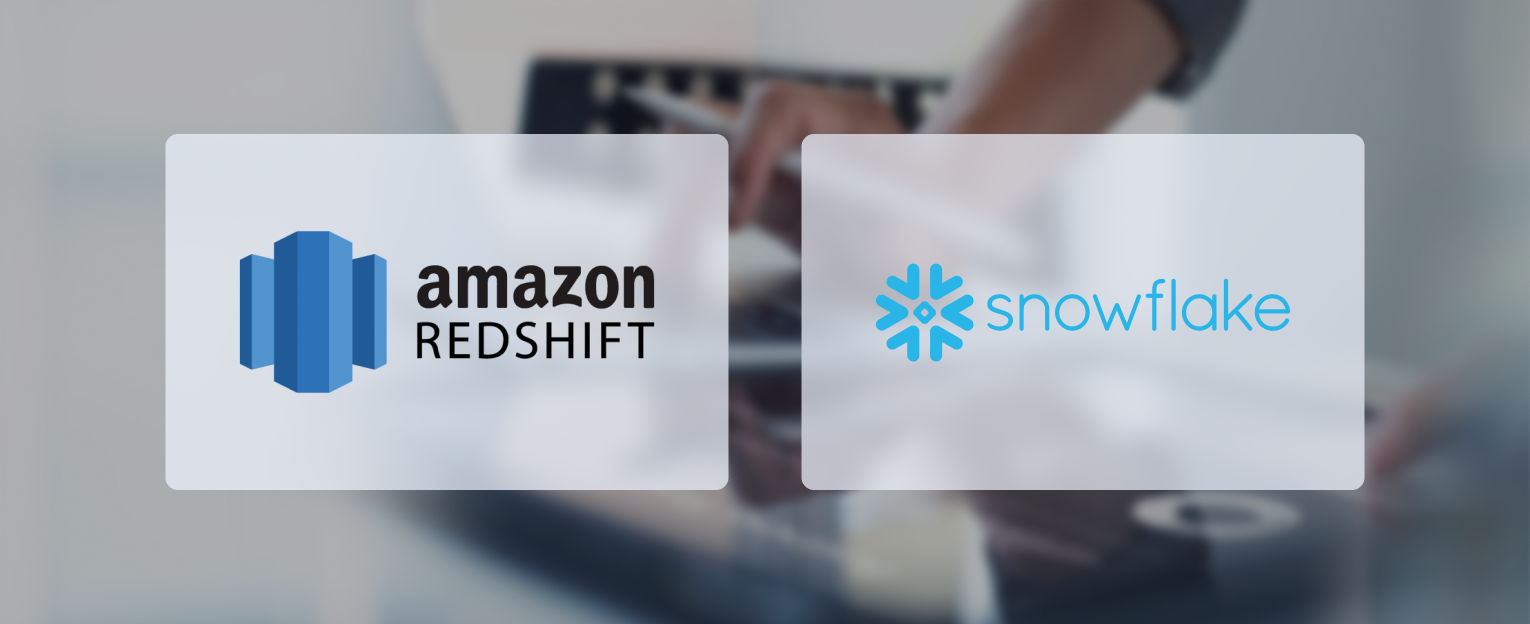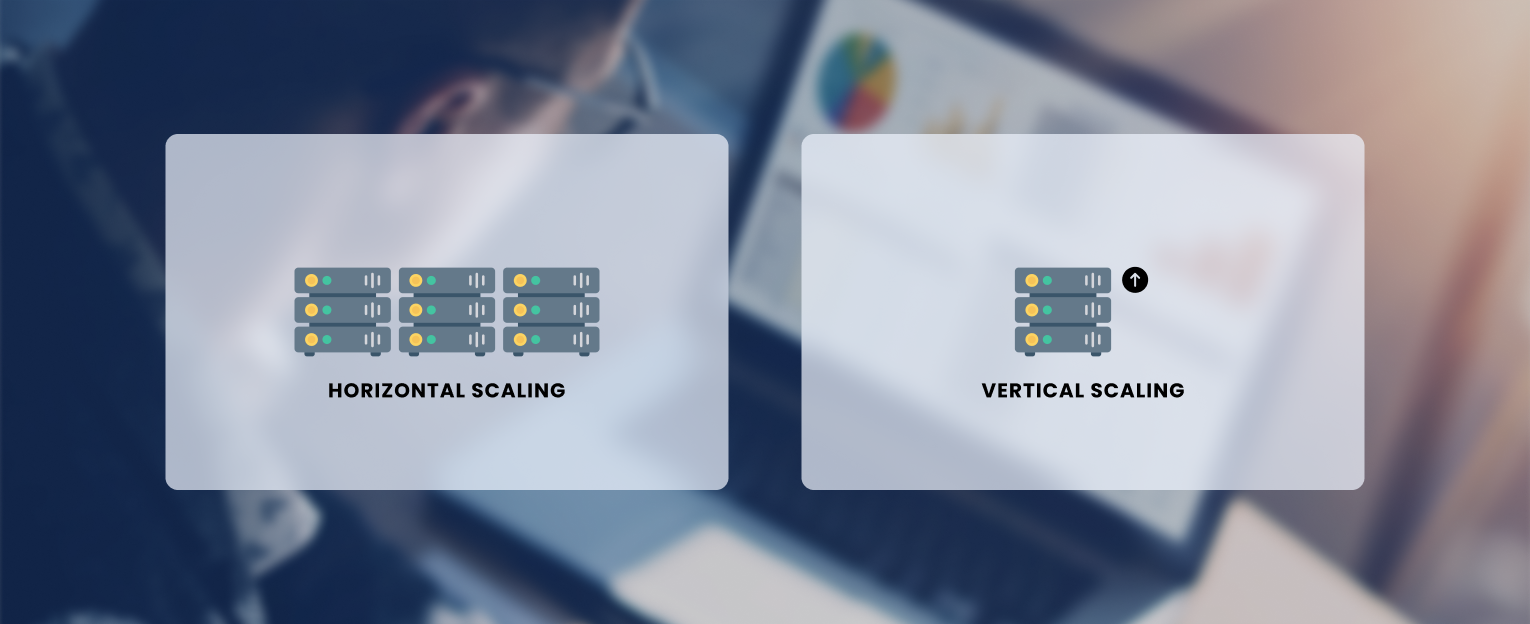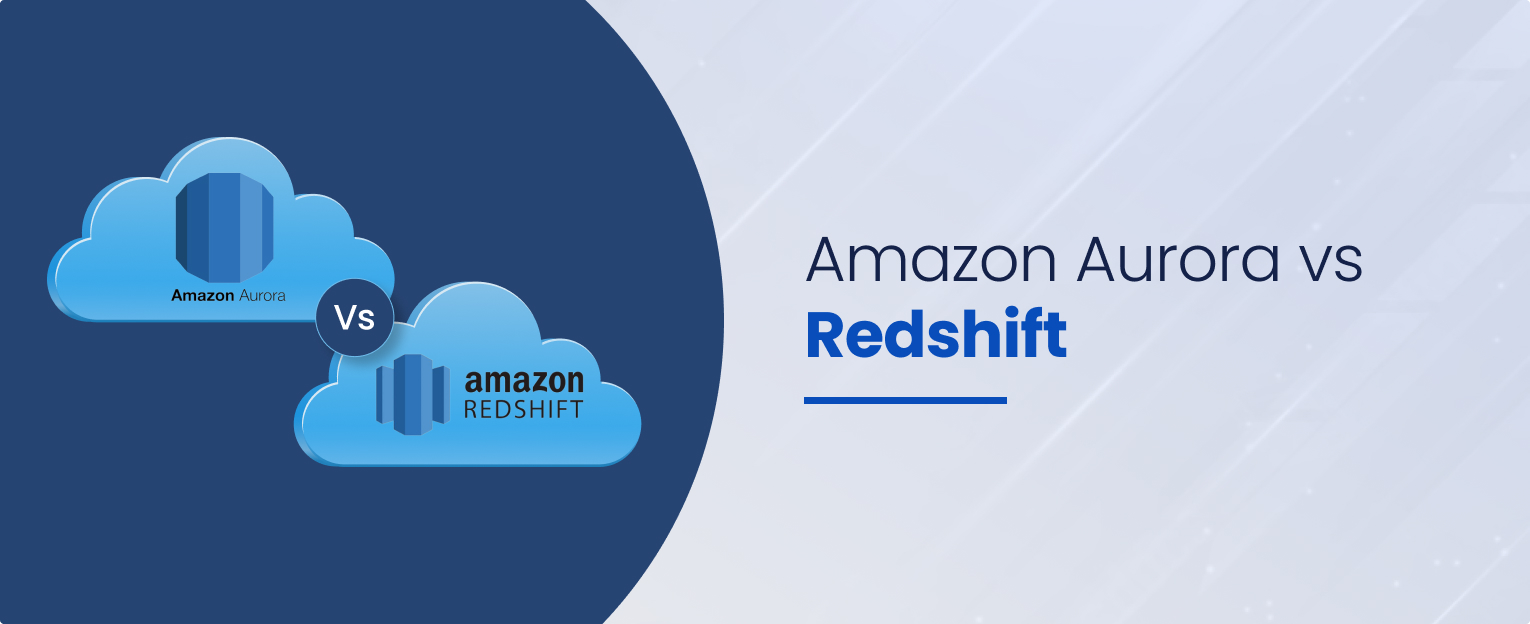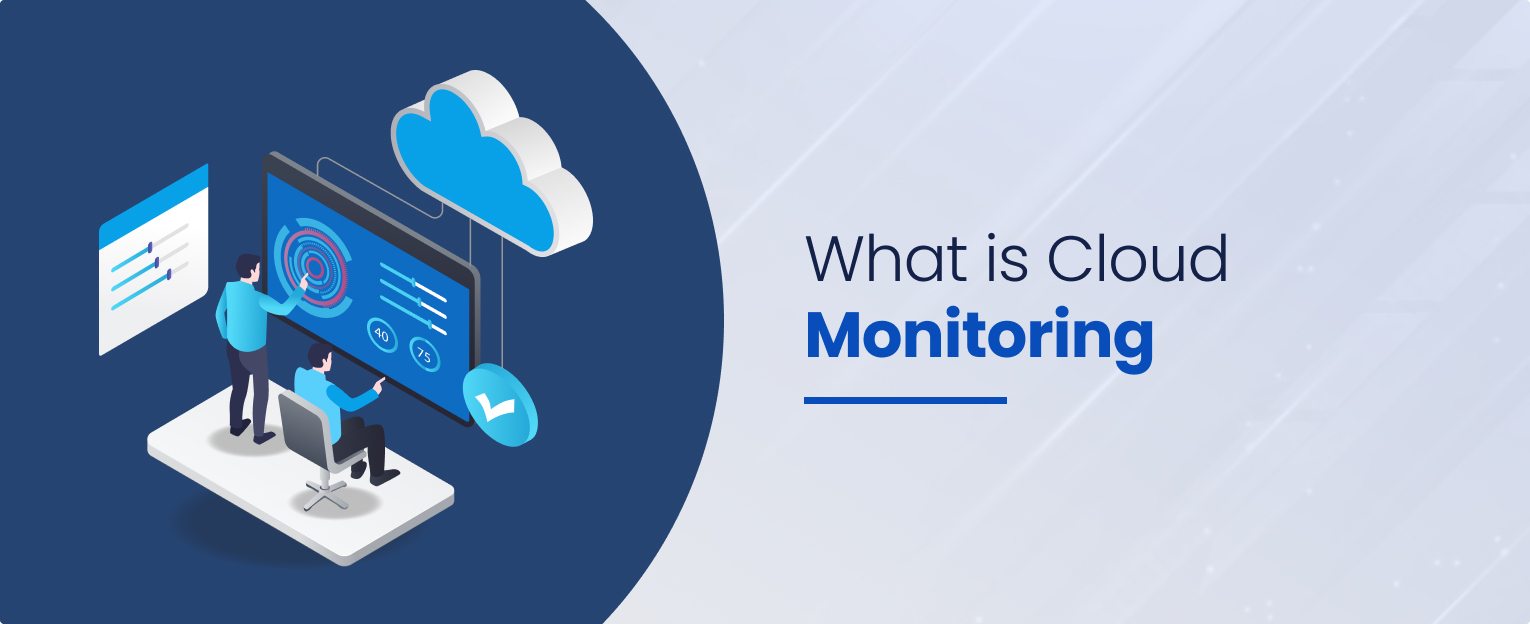We’ll be comparing Amazon Redshift vs Snowflake, two prominent players in the world of data warehousing. As businesses place a growing emphasis on data-driven insights, the choice of the right data warehouse platform becomes pivotal.
Find out the features, capabilities, and practical applications of these two robust solutions, helping you make an informed decision that aligns with your specific data requirements.
Without further delay, let’s learn in detail about Snowflake vs Redshift.
Top Read: Comparing AWS CloudFormation vs Terraform: Comprehensive Guide
What is Amazon Redshift?
Amazon Redshift is a fully managed, petabyte-scale data warehousing service offered by Amazon Web Services (AWS). It is built to provide high-performance, cost-effective, and scalable data warehousing solutions for businesses and organizations of all sizes. Amazon Redshift is specifically optimized for analytical queries and data warehousing workloads. This makes it a popular choice for businesses looking to analyze large volumes of data and gain insights into their operations.

Efficient Cloud Management with Folio3
Unlock the power of efficient cloud management with Folio3. Contact us today to optimize your cloud infrastructure and drive your business forward!
Key features and characteristics of Amazon Redshift include
1. Columnar Storage
Redshift stores data in a columnar format, which is highly efficient for analytical queries. This allows for rapid query performance, as only the necessary columns are read during query execution. Learn more about Amazon AWS Storage types in our detailed article.
2. Massively Parallel Processing (MPP)
Amazon Redshift uses a distributed and parallel architecture to process queries in parallel across multiple nodes. This results in faster query execution, even for complex analytical workloads.
3. Scalability
Redshift is designed to scale effortlessly as your data volume grows. You can easily add or remove nodes to meet your performance and storage requirements.
4. Data Compression
It employs advanced data compression techniques to minimize storage costs and optimize query performance. This helps reduce the overall cost of operating a data warehouse.
Use Cases: Why is Amazon Redshift used?
Amazon Redshift is used for a variety of data-related tasks and analytical purposes. Some common use cases for Amazon Redshift include:
1. Data Warehousing
Amazon Redshift is primarily designed as a data warehousing solution, where it efficiently stores and manages vast amounts of data, making it accessible for analysis and reporting.
2. Business Intelligence (BI)
Organizations use Amazon Redshift to power their BI tools and dashboards. It enables users to run complex queries and generate real-time reports for informed decision-making.
3. Data Analytics
Redshift provides a platform for advanced data analytics, allowing businesses to gain insights from their data, identify trends, and perform predictive and prescriptive analytics.
4. Data Integration
It can integrate seamlessly with various data sources, enabling organizations to consolidate data from different systems into a centralized data warehouse.
Pros of Amazon Redshift
- High Performance Amazon Redshift delivers fast query performance due to its columnar storage and parallel processing, making it suitable for data-intensive tasks.
- Scalability It easily scales to accommodate growing data needs, allowing organizations to expand their data warehousing capabilities as required.
- Integration Redshift seamlessly integrates with a wide range of data sources and analytics tools, simplifying data management and analysis.
One of the best reasons to choose Amazon Redshift is because of its high performance and integration capabilities. It wouldn’t be wrong to say that AWS Redshift is a great alternative to Snowflake.
Learn more about the benefits of AWS cloud for your organization.
Case Studies
Growth. Enabled.

Sunburst Type To Learn

InGenius Prep

Magento Cloud Migration

Nutrition Detection App
Cons of Amazon Redshift
1. Cost
Amazon Redshift can become costly as data volumes increase, particularly for larger organizations or those with fluctuating workloads.
2. Complex Maintenance
Some users find the management and maintenance of Redshift clusters to be complex, requiring careful monitoring and optimization.
3. Limited Data Types
Redshift may not support all data types or complex data transformations, which can be limiting for certain analytical tasks.
What is Snowflake?
Snowflake is a cloud-based data warehousing platform designed to store and analyze large volumes of data. It provides a highly scalable, flexible, and performance-optimized solution for organizations to manage and analyze their data effectively. Snowflake has gained popularity for its cloud-native architecture, which separates compute and storage resources, allowing users to scale each independently.
Key features and characteristics of Snowflake include
1. Cloud-Native Architecture
Snowflake is built from the ground up for the cloud. It runs on popular cloud platforms like AWS, Azure, and Google Cloud, taking advantage of their scalability, reliability, and global reach.
2. Separation of Compute and Storage
Snowflake’s architecture separates computing resources from storage. This allows users to scale compute power up or down as needed without affecting data storage, optimizing cost efficiency.
3. Data Sharing
Snowflake provides robust data sharing capabilities that allow organizations to securely share data with partners, customers, or other teams without the need for complex data transfers.
4. Multi-Cluster, Multi-Cloud Support
Users can set up multiple clusters to run concurrent workloads and queries. Additionally, Snowflake supports multi-cloud deployments, providing flexibility and vendor-agnostic options.
5. Automatic Scaling
Snowflake automatically scales compute resources to handle varying workloads, ensuring consistent query performance and reducing the need for manual optimization.
Use Cases: Why is Snowflake used?
Snowflake is used for a variety of data management and analytics purposes across different industries. Here are two common use cases for Snowflake:
1. Data Warehousing and Analytics
Snowflake is primarily used as a data warehousing solution. Organizations use Snowflake to centralize and manage large volumes of data from various sources. It allows users to store structured and semi-structured data in a single location, making it easily accessible for analytics and reporting. Data analysts, data scientists, and business intelligence professionals leverage Snowflake to run complex queries, perform ad-hoc data analysis, and generate insights from their data. It’s particularly valuable when dealing with massive datasets and complex data relationships.
2. Data Sharing and Collaboration
Snowflake’s data sharing capabilities are instrumental in data collaboration and sharing scenarios. Organizations use Snowflake to securely share data with external partners, customers, or other business units. This functionality streamlines data exchange, eliminating the need for data transfers and duplicate storage. For example, a retailer might share sales data with suppliers, or a healthcare provider might share patient data with research institutions. Snowflake’s data sharing features ensure that data remains accurate, up-to-date, and secure while promoting collaboration.
Pros of Snowflake
1. Elasticity
Snowflake offers automatic scaling, allowing resources to flexibly adapt to varying workloads without manual intervention. This results in optimal performance and cost savings.
2. Zero Maintenance
Snowflake manages infrastructure, maintenance, and updates, freeing users from the burden of administrative tasks, such as tuning and patching.
3. Data Sharing
Snowflake provides robust data sharing capabilities, enabling organizations to securely share and collaborate on data with external parties, partners, and customers.
Cons of Snowflake
1. Cost
While Snowflake’s pricing model is transparent, it can become expensive for organizations with large datasets and heavy workloads. Users should carefully monitor and manage usage to control costs.
2. Complexity for Simple Queries
Snowflake’s power and flexibility may lead to over-complexity for simple queries or small-scale projects, potentially impacting performance.
3. Data Egress Costs
Data egress (exporting data out of Snowflake) can incur additional charges, which organizations should consider when planning data transfers.
Similarities: Amazon Redshift vs Snowflake
Let’s discuss the similarities in Snowflake vs AWS Redshift.
1. Data Warehousing
Both Amazon Redshift and Snowflake are cloud-based data warehousing solutions designed to store, manage, and analyze large volumes of data. They provide a central repository for structured and semi-structured data, facilitating analytics and reporting.
2. Scalability
Both platforms offer scalability to accommodate changing data requirements. They allow users to scale up or down based on workload demands, ensuring optimal performance and cost efficiency.
3. SQL Support
Amazon Redshift and Snowflake both support SQL for querying and analyzing data. This means that data analysts and SQL developers can work with familiar query languages to extract insights from the data stored in these platforms.
6 Key Differences: Amazon Redshift vs Snowflake
1. Architecture
- Amazon Redshift: It uses a traditional MPP (Massively Parallel Processing) architecture with separate compute and storage nodes. While it offers good performance, users need to manage and provision both components.
- Snowflake: Snowflake uses a unique architecture that separates storage, compute, and services. This separation enables Snowflake to offer automatic scaling and eliminates the need for manual management of resources.
2. Ease of Use
- Amazon Redshift: It requires more manual management tasks, such as performance tuning, resizing clusters, and optimizing query plans.
- Snowflake: Snowflake is known for its ease of use, as it handles many administrative tasks automatically, reducing the burden on users. This makes it more user-friendly, especially for organizations with limited DBA resources.
3. Concurrency
- Amazon Redshift: Concurrency scaling in Amazon Redshift is available but may require manual configuration and additional costs for extra compute capacity.
- Snowflake: Snowflake provides automatic and seamless concurrency scaling, allowing multiple users to run concurrent queries without impacting performance or requiring manual adjustments.
4. Pricing Model
- Amazon Redshift: Amazon Redshift offers various pricing models, including on-demand and reserved instances. Users need to carefully plan and manage their usage to control costs effectively.
- Snowflake: Snowflake uses a pay-as-you-go pricing model with transparent billing. While it may appear more expensive initially, it often provides better cost predictability due to automatic scaling.
5. Data Sharing
- Amazon Redshift: Data sharing capabilities are available, but they may require more manual setup and management.
- Snowflake: Snowflake excels in data sharing, offering seamless and secure data sharing between organizations and users, making it easier to collaborate on data-driven projects.
6. Security and Governance
- Amazon Redshift: Amazon Redshift provides robust security features but may require more manual configuration.
- Snowflake: Snowflake offers built-in security and governance features, including data masking, encryption, and access controls, simplifying data security management.

Efficient Cloud Management with Folio3
Unlock the power of efficient cloud management with Folio3. Contact us today to optimize your cloud infrastructure and drive your business forward!
Comparison Table: Differences between AWS Redshift and Snowflake
Here is a simple comparison table that discusses the differences of Snowflake and Redshift with no-fluff.
| Feature | Amazon Redshift | Snowflake |
| Architecture | MPP (Massively Parallel Processing) with separate compute and storage nodes | Unique architecture separating storage, compute, and services for automatic scaling |
| Ease of Use | Requires more manual management tasks like performance tuning and resizing clusters | Known for its user-friendly, automated approach with minimal manual intervention |
| Concurrency | Concurrency scaling available but may require manual configuration and additional costs | Automatic and seamless concurrency scaling for multiple users without manual adjustments |
| Pricing Model | Various pricing models including on-demand and reserved instances | Pay-as-you-go pricing model with transparent billing for better cost predictability |
| Data Sharing | Data sharing capabilities available but may require more manual setup and management | Excellent data sharing features for seamless and secure collaboration on data projects |
| Security and Governance | Robust security features with potential manual configuration | Built-in security and governance features, including data masking, encryption, and access controls |
| Scalability | Scalable with manual resource management | Automatic and elastic scalability without user intervention |
| SQL Support | Supports SQL for querying and analysis | Supports SQL for querying, making it accessible to data analysts |
| Backup and Recovery | Offers automated backup and recovery options | Provides backup and recovery features for data protection |
| Data Integration | Integrates with various data sources and BI tools | Offers seamless integration with different data sources and analytics tools |
| Cost Management | Requires careful planning and management to control costs effectively | Provides cost predictability due to automatic scaling and transparent billing |
| Maintenance | Requires more manual administration tasks | Reduces administrative burden with automatic resource management |
| Use Cases | Suitable for organizations with extensive data warehousing experience | Ideal for organizations looking for a user-friendly, fully managed solution |
Amazon Redshift vs Snowflake: Which One Should You Choose and When?
Amazon Redshift and Snowflake are cloud-based data warehousing solutions. Choose Redshift if you’re already in AWS, have predictable workloads, and prefer cost-efficiency. Snowflake suits multi-cloud strategies, flexible scaling, ease of use, data sharing, and complex data. Consider factors like data volume, performance, budget, integration, and security. Assess your organization’s unique needs and run pilot projects for the best fit.
Key points to note:
- Redshift integrates seamlessly with AWS services.
- Snowflake supports multi-cloud deployments.
- Redshift’s cost-effectiveness is suited for predictable workloads.
- Snowflake offers granular scaling and ease of use.
- Consider your data volume, performance needs, and budget.
- Evaluate integration with other tools and services.
- Both platforms provide robust security features.
- Pilot projects can help determine the best fit.
Conclusion
In summary, choosing between Amazon Redshift vs Snowflake depends on your organization’s specific needs and circumstances. Amazon Redshift is well-suited for those already using AWS, with predictable workloads and cost-efficiency as key priorities. Snowflake offers versatility, making it a strong choice for organizations with multi-cloud strategies, variable workloads, and complex data requirements. Factors like data volume, performance, budget, integration, and security should be carefully considered, and pilot projects can help determine the best fit. Ultimately, the decision should align with your organization’s data warehousing and analytics goals and long-term cloud strategy.
Learn how AWS cloud consultants can help you optimize your organization’s infrastructure for optimized management, cost-effectiveness and efficiency.
























